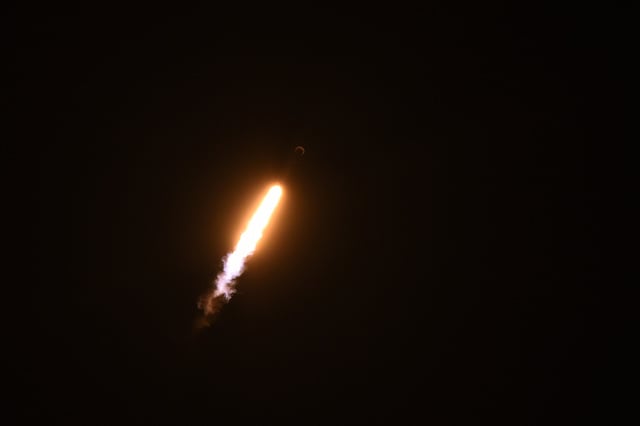A rocket with an unmanned commercial lander was launched to the lunar surface on Sunday. If successful, the mission will be the first-ever private lunar mission. The lander’s creator, the Japanese company ispace, and the SpaceX launcher twice delayed launches last week for additional checks.
The Japanese company iSpace wants to be the first commercial company to land on the moon. So far, only the US, USSR/Russia and China have succeeded. Attempts by Israel and India failed.
In the long term, ispace wants to extract raw materials and water from the lunar surface. This could help build a manned base on the moon. The Hakuto-R mission is to test the design and technology. The Japanese are cooperating with the space agencies of the United States and Europe to exploit the moon.
Rashid explorer
The Rashid reconnaissance vehicle, developed by the United Arab Emirates, will also accompany it. The rover must roam the lunar surface for about two weeks to conduct scientific research using cameras and sensors. Rashid weighs about 10 kilograms, has a length and width of more than 50 centimeters, and a height of about 70 centimeters. In 2020, a satellite from the Emirates went to Mars.
The probe and orbiter were flown into space by SpaceX, the space company of entrepreneur Elon Musk. The launch took place from Kennedy Space Center, the historic space base at Cape Canaveral.
Great detour
It is not certain if the probe will actually be the first commercial device to reach the Moon. The ship takes a long detour. It initially reaches 1.5 million kilometers from Earth, four times the distance the Moon is from Earth. As a result, it likely won’t reach the Moon until the end of April next year. Next spring, two more commercial probes (Nova-C and Peregrine) will also go to the Moon. It is not yet clear which of the three will arrive first.
The Japanese company iSpace wants to be the first commercial company to land on the moon. So far, only the US, USSR/Russia and China have succeeded. Attempts by Israel and India failed, and in the end, ispace wanted to extract raw materials and water on the moon. This could help build a manned base on the moon. The Hakuto-R mission is to test the design and technology. The Japanese are working together with the American and European space agencies to mine the moon, and the Rashid probe, developed by the United Arab Emirates, will also accompany the probe. The rover must roam the lunar surface for about two weeks to conduct scientific research using cameras and sensors. Rashid weighs about 10 kilograms, has a length and width of more than 50 centimeters, and a height of about 70 centimeters. In 2020, a satellite from the Emirates went to Mars, as the probe and explorer were brought into space by SpaceX, the space company of businessman Elon Musk. The launch took place from the Kennedy Space Center, the historic space base at Cape Canaveral. It is not certain if the probe will actually be the first commercial device to reach the Moon. The ship takes a long detour. It initially reaches 1.5 million kilometers from Earth, four times the distance the Moon is from Earth. As a result, it likely won’t reach the Moon until the end of April next year. Next spring, two more commercial probes (Nova-C and Peregrine) will also go to the Moon. It is not yet clear which of the three will arrive first.

“Total coffee specialist. Hardcore reader. Incurable music scholar. Web guru. Freelance troublemaker. Problem solver. Travel trailblazer.”







More Stories
GALA lacks a chapter on e-health
Weird beer can taste really good.
Planets contain much more water than previously thought